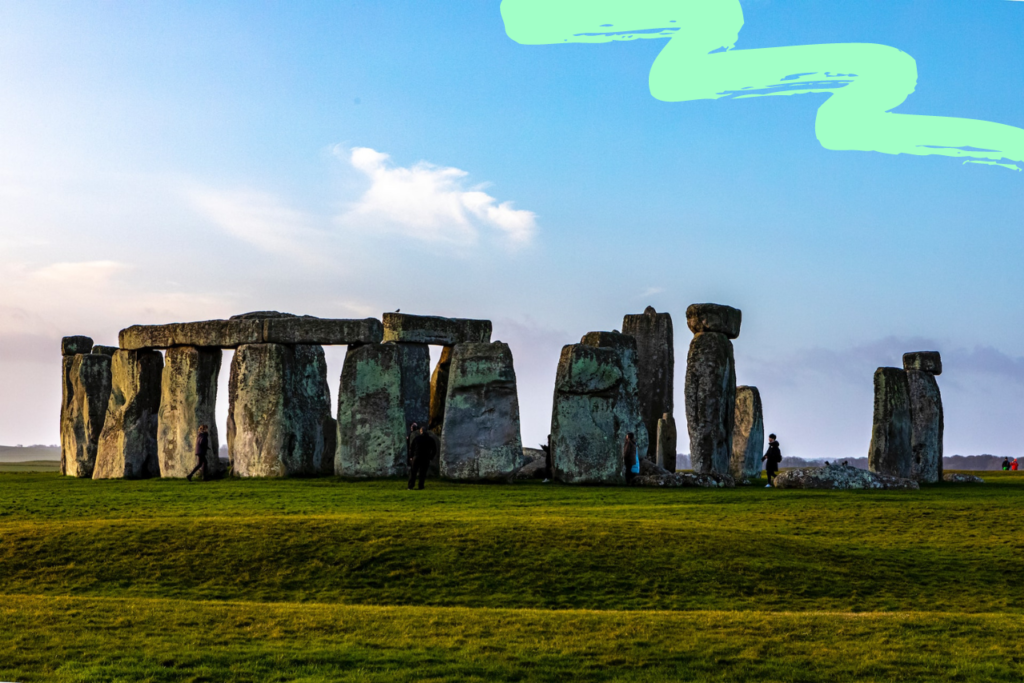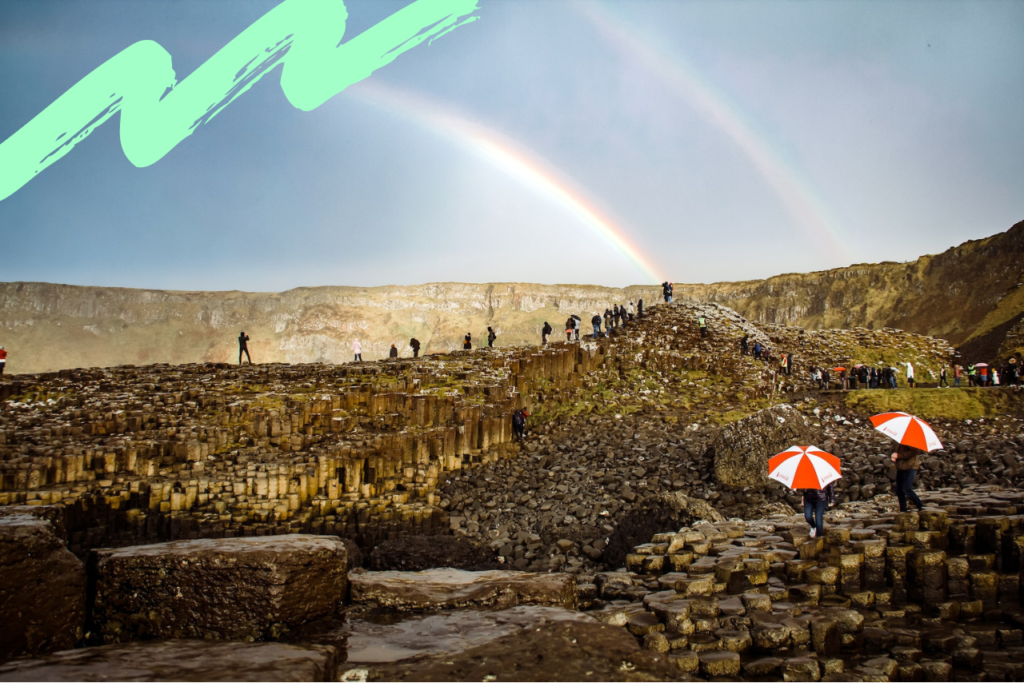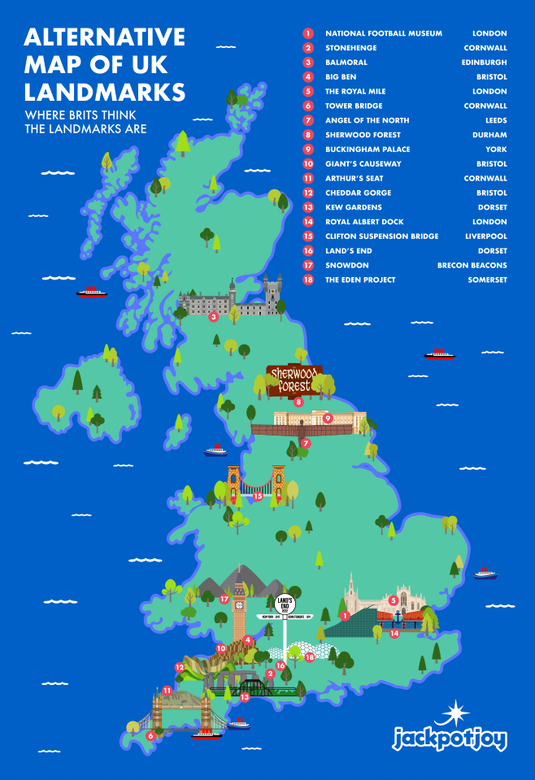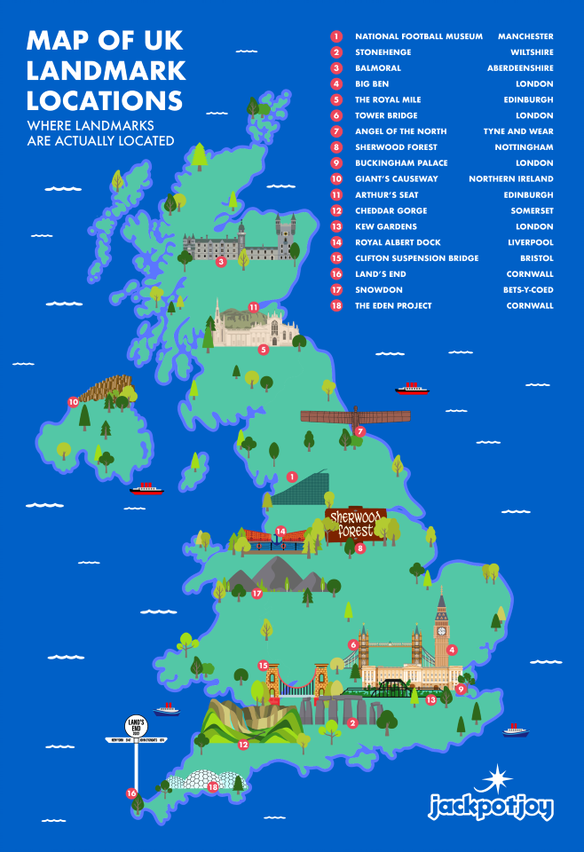Now that summer is well and truly here, many of us will be packing up the car and taking off on a family holiday, full of exploration, frivolity, and, let’s face it, a fair amount of box ticking where the UK’s most famous sites are concerned.
Let’s pose a couple of questions to help you narrow down your itinerary; which UK landmarks do you hope to see on your holiday? And, more importantly, are you 100% sure you know where they are located?
Indeed, in a recent survey of 2000 UK adults, it was revealed that many UK adults struggled to pinpoint the correct locations of our top landmarks.
So, carry on reading to find out some interesting facts on some of the UK’s top landmarks, plus some precise information on where they are actually located.
Stonehenge
Built around 5000 years ago Stonehenge is one of the world’s most famous prehistoric monuments, yet despite this, almost half of Brits (46%) didn’t know its location in the survey. It’s no surprise then that the phrase ‘where is Stonehenge’ has 8100 average monthly searches on Google.
Located in Wiltshire, close to the city of Salisbury, Stonehenge is an excellent place to visit for those who love history. Marvel at the fascinating stone circle and learn a little more about it from the onsite exhibition, which sheds a little light on Stonehenge’s potential origins.
Though the purpose of the monument is unknown, many theories have been proposed – some believe it was a burial site, others a religious pilgrimage destination. Regardless of its meaning, Stonehenge (along with nearby Avebury) is a UNESCO World Heritage Site and one of the most popular tourist attractions in the UK.
Read: 5 IDEAL places to holiday in southwest England

Buckingham Palace
With 2022 being the year of the Queen’s Platinum Jubilee (or, the Platty Joobs, of course) it’s even more surprising that 15% of Brits surveyed didn’t realise that Buckingham Palace was in the capital city, London. With 15,600 people looking up the location each year, the Palace may be well known, but its exact location isn’t. Huh?
With 580,000 visitors in 2020 Buckingham Palace is one of the most visited attractions in the UK and it’s not difficult to see why. Visitors are allowed a glimpse into the royal way of life as they tour the 19 state rooms filled with royal treasures (many of which the British Empire allegedly stole).
There’s also a multimedia guide for children narrated by Rex the Corgi, as well as additional activities in the family pavilion. What more could you want?
Read: 7 IDEAL places to explore England’s history

National Football Museum
With the Lionesses winning the Euros in a nerve-biting final against Germany this July, there’s even more of a reason to visit the National Football Museum this summer. Learn the History of women’s football (and the men’s too) and enjoy a day out in Manchester.
With almost as many yearly admissions as Buckingham Palace in 2020, it might be somewhat surprising to learn that only 1 in 4 (39%) Brits knew that the National Football Museum was located in Manchester with 30% of respondents thinking it was actually in London.

Giants Causeway
If you live in Ireland or are planning a trip across to Northern Ireland this Summer, then a visit to the Giant’s Causeway is a must. A geological wonder and UNESCO world heritage site, the Giant’s Causeway dates back to the volcanic age, almost 60 million years ago. Roughly 40,000 basalt columns of rock protrude from the ground, like giant stepping stones.

The Giants Causeway is one of the most spectacular natural wonders in Europe and yet 1 in 20 Brits place its location as Bristol, 307 miles away from its true location of County Antrim, Northern Ireland.
Perhaps they were thinking of the Cribbs Causeway or even the Clifton Suspension Bridge… Who knows?
Have fun exploring Britain and its many landmarks this summer; just be sure to look up their location before you set off!






